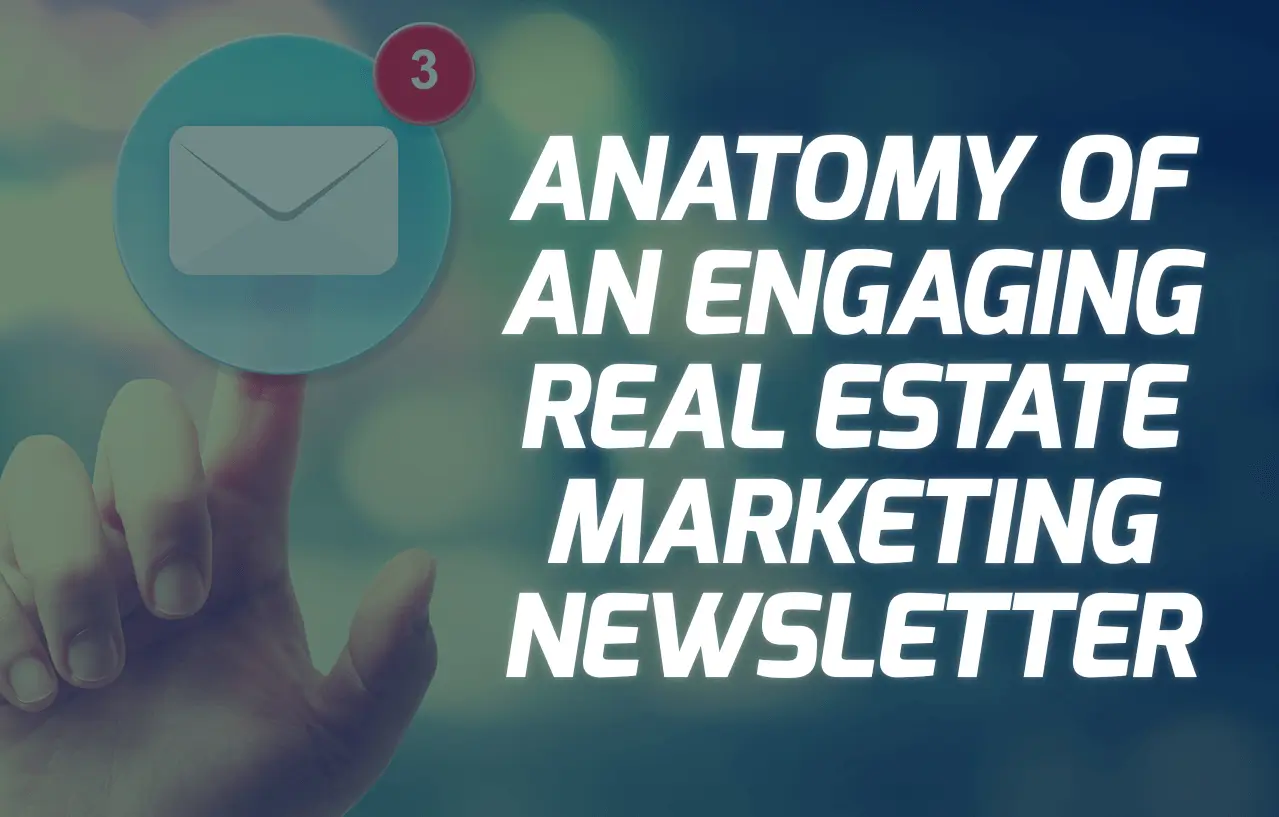What exactly does a potent and powerful real estate email newsletter look like? What are the core elements needed to continually increase your open and click-through rates and lead conversion numbers? To maximize the value of your real estate email marketing newsletter, it’s important to put an equal focus on the value of your content and the structure that can create a great user experience.
You may think the structure of your real estate newsletters differs greatly from newsletters sent by professionals and brands in other industries, but in actuality, there are standards that work across industries that you should absolutely implement to effectively engage and nurture their leads.
Below, we break down the anatomy of a premier real estate newsletter: from the subject line and header image to the listings featured and footer information.
Easy-to-Use, Responsive Templates
Few agents know how to build an email newsletter from the ground up. Many use custom-made templates from one of the numerous email marketing resources that exist across the internet. Ideally, the template you go with for your newsletter is responsive — meaning it’ll look just as fantastic on iPhones, iPads, Androids, and the like as it would on a desktop PC or laptop — and allows you to easily add in your own copy and different multimedia formats (more on those in a minute). Statistics show email open rates on mobile devices will only continue to rise, so it’s imperative to use a platform and template that makes your newsletter stand out from non-responsive emails.
You can certainly go all out and build your own email templates from scratch, but given the demands of being a real estate agent, your best bet is to leave it to the experts who can deliver ready-to-go real estate email templates for you, so you can focus on the business tasks that matter.

Personalized “From” Email Address
Knowing there’s a real human being behind email newsletters (along with digests, promotional emails, and the other core types consumers typically sign up to receive) helps recipients trust you as a source. Sure, most of your emails will be automated via drip marketing campaigns, but you can still personalize your newsletter by sending it from your actual work address or a similar one (e.g. janesnewsletter@agency.com). The benefits of personalization are clear: Personalized emails lead to transaction rates that are six times higher for brands than non-personalized emails.
In addition to using an address that shows you’re an actual human (and not a random email generator recipients can’t interact with), it’s vital to let your email newsletter subscribers understand they can directly reply to that address. Have you ever had a question for a company after reading one of their newsletters only to find “Please do not reply to this message” written boldly at the bottom of the message? This can be quite annoying for consumers, so make it simple for your audience to get in touch with you after reading your newsletters. After all, the whole point of email marketing is to make it simpler to engage with prospective clients, so preventing them from initiating a line of dialogue with you — one that could lead to new business — doesn’t make much sense.
Uniform Subject Line Naming Convention
Consumers want a lot from the brands they follow, engage with, and purchase from — a quality product and service, stellar customer support, and a go-the-extra-mile attitude, chief among them. However, some brands forget to provide one thing: consistent brand messaging within their marketing strategies. This ranges from use of logos and other aesthetic branding materials to the actual copy and content associated with the marketing materials these brands produce, like email marketing campaigns.
When setting up your real estate newsletters, provide your leads with consistency across the board, starting with your email subject lines. As this report from Adestra indicates, there are thousands of variables that dictate the success and failure of email newsletters, and one of those factors is the subject line. The study explains that consistency with your subject lines in terms of usage of the same words and phrases tends to perform better than subject lines featuring random copy with each successive email. Moreover, using the word “Newsletter” actually tends to lead to poorer email metrics, so try other eye-catching words, like “Special,” “Update,” and “Bulletin,” which, according to the report, received higher open rate percentages versus the average open rate for all email. You should also test your email campaigns against one another by featuring two different subject lines and seeing which one resonates most with your recipients, so use best practices for your email subject lines, but don’t be afraid to experiment every now and then.
Striking Visuals From Top to Bottom
Email tests over at HubSpot revealed that HTML emails appear to be favored over plain-text email. This shouldn’t come as a surprise to anyone, given more and more newsletters feature videos, GIFs, and other sleek and modern imagery today. Where this trend comes into play for real estate agents is the creation of their own newsletters. Deliver a gorgeous, visual-heavy email to your audience — one that features photos of your listings, blog posts, and other content marketing efforts — and you could see marked improvements in practically every major email metric.
Whether you find royalty-free stock photos or generate your own edited images, incorporate them into your newsletters to better appeal to your audience. Having said that, don’t go overboard with image inclusion to avoid to over-saturating your email, and use only the ones that are most relevant and appropriate given the subject(s) of your newsletters.
As noted over on the Constant Contact blog, brands who include images in their newsletters need to ensure they will display well on all devices when viewed and use only a handful of images max to improve their click-through rate (CTR). Research of 2-million-plus emails from the company shows email with three or fewer images and 20 lines of text or less led to the highest CTRs for brands. Feel free to experiment with this, though, to see what works well for your recipients.
Headlines That Pop Off the Page
Once you have a stunning image atop your newsletter, it’s time to focus on the header of your email. Similar to how you structure your subject line, this is important to nail, as it will dictate if recipients a) decide to continue reading your email after opening it, and b) click on the content links related to the headline.
If you feature a few home seller resources in one of your newsletters, for instance — say, an ebook detailing staging tips, an infographic featuring price-listing advice, and a survey of your clients saying what they wish they had done before listing — the headline should incorporate messaging that pertains to all three content pieces. Something to the effect of “The Only Three Seller Resources [Your Market Name] Home Sellers Need” or “The [Your Market Name] Seller’s Guide to Staging, Pricing, and Listing” could work to entice your audience and tell them right off the bat exactly what your real estate newsletter entails and the value it offers.

Just Enough Explanatory Copy
Before jumping into the exact types of content you ought to share in your esteemed newsletters, it’s important to understand the structure your email should take. More specifically, you need to know how to format every element in your email so the entire message looks cohesive, is easy to read and scan, and prioritizes the most important components first — and it all starts with how much copy you produce.
The reason so many consumers love signing up for brands’ newsletters is they’re easily digestible and offer just enough new and interesting insights and information that they don’t have to spend more than a single minute reading them over. Yes, you want them to hang around for longer than 60 seconds, but the principal aim for your newsletter needs to be to compose conversational language that explains the central message of your newsletter in an expedient amount of time.
Multiple marketing research firms have conducted test after test to see which amount of copy leads to the best results for brands’ newsletters. The specific results for each vary, but one thing is clear: The shorter the copy, the better. For example, the Marketing Experiments Blog tested copy length for email newsletters it sent on the same exact topic and found the shorter one (95 words) had a 17% higher CTR than the longer one (170 words).
As with all marketing collateral, testing is a must, but the data is clear: Keep it brief and to-the-point.





